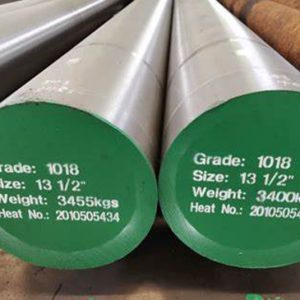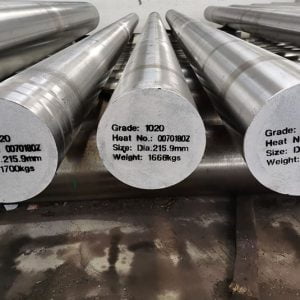Introduction

Choosing between 1018 mild steel and stainless steel involves understanding their distinct properties and applications. This blog explores the nuanced differences, pros, and cons of each material to help you make informed decisions for various projects.
Properties of 1018 Mild Steel
1018 mild steel, characterized by its low carbon content (approximately 0.18%), offers excellent weldability and machinability. Its relatively low hardness (Brinell hardness of 126) makes it suitable for applications where formability and ease of machining are essential. This steel grade is widely used in construction, automotive components, and general fabrication due to its cost-effectiveness and versatility.
Mechanical Properties
In terms of mechanical properties, 1018 mild steel exhibits a tensile strength of approximately 440 MPa and a yield strength of 370 MPa. These properties make it suitable for structural applications where moderate strength is required without the need for high hardness or toughness. The excellent machinability of 1018 steel allows for efficient shaping and fabrication processes, contributing to its popularity in manufacturing sectors.
Applications
Due to its affordability and ease of processing, 1018 mild steel finds applications in various industries. It is commonly used for making bolts, nuts, screws, and other fasteners, as well as in construction for structural components like beams and bars. Its weldability makes it suitable for welding operations without compromising the integrity of joints, making it a preferred choice in fabrication.
Properties of Stainless Steel
Stainless steel derives its name from its ability to resist stains and corrosion, owing to its chromium content (typically ranging from 10% to 20%). This alloyed steel comes in numerous grades, each tailored to specific applications based on their corrosion resistance, mechanical properties, and aesthetic appeal.
Corrosion Resistance
One of the primary advantages of stainless steel is its exceptional corrosion resistance. The addition of chromium forms a passive oxide layer on the surface, protecting it from rust and oxidation. This property makes stainless steel suitable for environments where exposure to moisture, chemicals, and harsh weather conditions is prevalent. Applications range from kitchen utensils and food processing equipment to medical instruments and marine components.
Mechanical and Physical Properties
Stainless steel grades vary in mechanical properties depending on their composition and heat treatment. They generally exhibit higher tensile strengths compared to mild steel, making them suitable for applications demanding greater structural integrity and durability. The hardness of stainless steel varies widely by grade, with some offering enhanced wear resistance and high-temperature performance.
Comparing Mechanical Properties
When comparing mechanical properties between 1018 mild steel and stainless steel, it’s crucial to consider the specific grade of stainless steel. While 1018 mild steel provides sufficient strength for many structural applications, stainless steel grades can offer superior tensile strength and hardness, particularly in high-performance environments.
Corrosion Resistance and Applications
The superior corrosion resistance of stainless steel makes it indispensable in environments where maintaining hygiene and durability are paramount. In industries such as food processing, pharmaceuticals, and marine engineering, stainless steel grades are chosen for their ability to withstand corrosive elements without degradation. This corrosion resistance reduces maintenance costs and extends the lifespan of equipment and structures exposed to challenging conditions.
Applications in Different Industries
Stainless steel’s versatility extends beyond corrosion resistance to include aesthetic appeal and ease of maintenance. It is commonly used in architectural projects for its sleek appearance and durability, as well as in automotive exhaust systems, aerospace components, and surgical instruments. The ability to choose from various grades allows designers and engineers to select the optimal stainless steel type for specific performance requirements.
Economic Considerations
In terms of cost-effectiveness, 1018 mild steel generally prevails due to its lower alloy content and simpler manufacturing processes. It is often the preferred choice for applications where mechanical strength and corrosion resistance are less critical compared to factors such as initial cost and ease of fabrication. Stainless steel, while more expensive upfront, offers long-term savings through reduced maintenance and replacement costs in corrosive environments.
Common Applications of 1018 Mild Steel and Stainless Steel

| Application | 1018 Mild Steel | Stainless Steel |
|---|---|---|
| Construction | Structural beams, reinforcing bars | Structural frames, architectural components |
| Automotive | Bolts, nuts, screws | Exhaust systems, automotive trim |
| Manufacturing | Machine parts, shafts | Industrial equipment, conveyor systems |
| Food Processing | – | Food preparation surfaces, equipment |
| Medical Instruments | – | Surgical tools, medical devices |
| Marine Engineering | – | Shipbuilding, offshore platforms |
| Architectural | – | Handrails, cladding |
Conclusion
Choosing between 1018 mild steel and stainless steel depends on the specific requirements of your project, including mechanical strength, corrosion resistance, cost considerations, and aesthetic preferences. Both materials have distinct advantages and are suitable for a wide range of applications across various industries. Understanding their properties and applications ensures you can select the optimal material to achieve desired performance and durability.
FAQ
Q: Is 1018 mild steel suitable for outdoor applications?
A: 1018 mild steel can be used outdoors with proper coatings or treatments to prevent rusting. However, stainless steel is generally preferred for outdoor applications due to its inherent corrosion resistance.
Q: Which is easier to weld, 1018 mild steel or stainless steel?
A: 1018 mild steel is known for its excellent weldability, whereas stainless steel requires careful consideration of the grade and welding technique due to its higher alloy content.
Q: What are the main differences in cost between 1018 mild steel and stainless steel?
A: 1018 mild steel is typically more economical than stainless steel due to its lower alloy content and simpler manufacturing processes.






